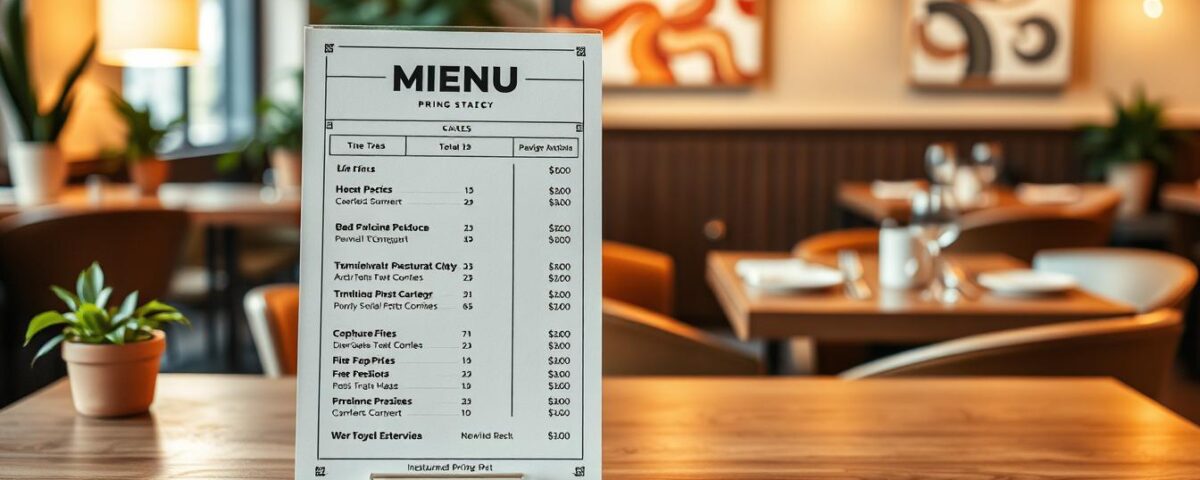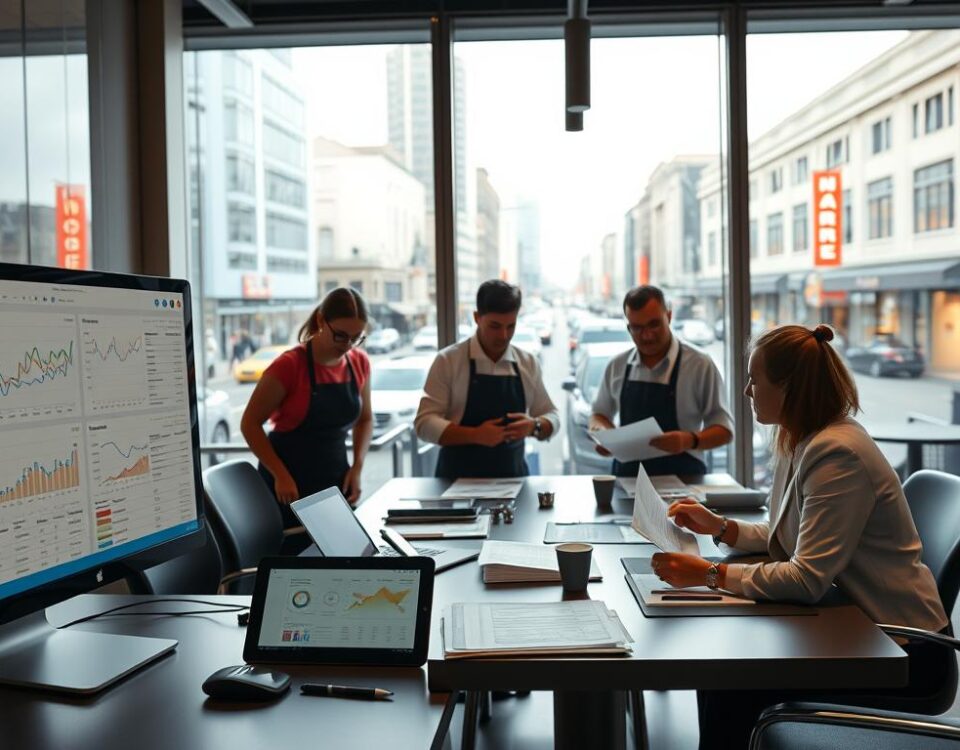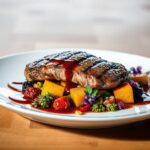
5 Visual Tricks to Instantly Elevate Your Food Plating
July 2, 2025
The Ultimate Commercial Kitchen Cleaning Checklist to Pass Every Inspection
July 3, 2025As a restaurant owner, I’ve seen firsthand how a simple menu pricing mistake can turn a profitable dish into a loss. For instance, a popular burger joint might sell a signature burger for $10, but if the food costs aren’t carefully calculated, they might be losing money on every sale. Surprisingly, a study found that nearly 60% of restaurants fail due to poor cost management.
Understanding your food cost percentage is crucial to maintaining a healthy bottom line. By mastering a simple yet effective formula, you can ensure your restaurant remains profitable, even in today’s competitive market. So, what’s the secret to pricing your dishes for profit?
Key Takeaways
- Understand the importance of calculating your food cost percentage for restaurant profitability.
- Learn how to price your menu items for maximum profit using a simple, effective formula.
- Discover the common pitfalls in cost management that many restaurants face.
- Gain insights into creating a sustainable business model that ensures long-term profitability.
- Explore advanced pricing strategies to stay competitive in the market.
Understanding Food Costs in the Restaurant Industry
In the restaurant industry, understanding food costs is crucial for maintaining profitability. Food cost refers to the ratio of a restaurant’s cost of ingredients (food inventory) to the revenue generated when those ingredients are used to prepare menu items (food sales). This ratio is typically expressed as a percentage, known as the food cost percentage.
What Is Food Cost?
Food cost is a critical metric that helps restaurants determine the profitability of their menu items. It is calculated by dividing the cost of ingredients by the revenue generated from the sale of those ingredients. For instance, if a dish costs $5 to make and is sold for $15, the food cost percentage is 33.3%. Some restaurants prefer to use the Cost of Goods Sold (COGS), which includes not just the cost of ingredients but also other expenses like packaging and garnishes.
Why Food Costs Matter to Your Bottom Line
Tracking food costs is essential for restaurant profitability. Even small improvements in food cost percentage can significantly impact your bottom line. For example, reducing your food cost percentage from 35% to 32% can increase your profit margins. Food costs directly affect menu pricing decisions and overall business strategy. Industry statistics show that food costs typically account for 28-35% of a restaurant’s total expenses, making them one of the largest controllable costs.
| Restaurant Type | Average Food Cost Percentage |
|---|---|
| Fine Dining | 30-35% |
| Casual Dining | 28-32% |
| Quick Service | 25-30% |
Understanding food costs helps you make informed decisions about menu engineering, vendor selection, and portion control. It also impacts cash flow and long-term business sustainability, especially during periods of ingredient price volatility.
The Essential Food Cost Formula Explained
To ensure your restaurant is running efficiently, it’s essential to grasp the food cost formula. This formula is the backbone of menu pricing and profitability analysis. By understanding and applying it correctly, you can make informed decisions that impact your bottom line.
The food cost formula is vital for calculating the cost of ingredients used in your menu items relative to your total food sales. It’s a critical metric that helps restaurateurs strike the perfect balance between profitability and customer satisfaction.
Basic Food Cost Percentage Formula
The food cost percentage formula is a crucial tool for any restaurant owner. It’s calculated as: (Beginning Inventory + Purchases – Ending Inventory) ÷ Total Food Sales. Let’s break down each component:
- Beginning Inventory: The value of your food supplies at the start of the period.
- Purchases: The cost of additional food supplies purchased during the period.
- Ending Inventory: The value of your remaining food supplies at the end of the period.
- Total Food Sales: The total revenue generated from food sales during the period.
| Component | Description | Example Value |
|---|---|---|
| Beginning Inventory | Initial food supplies value | $10,000 |
| Purchases | Cost of additional supplies | $5,000 |
| Ending Inventory | Remaining supplies value | $8,000 |
| Total Food Sales | Total revenue from food sales | $20,000 |
Food Cost Per Serving Formula
To calculate food cost per serving, you need to sum the ingredient costs for each menu item. This involves:
- Listing all ingredients in a dish.
- Determining the cost of each ingredient.
- Calculating the total ingredient cost for the dish.
- Dividing by the number of servings.
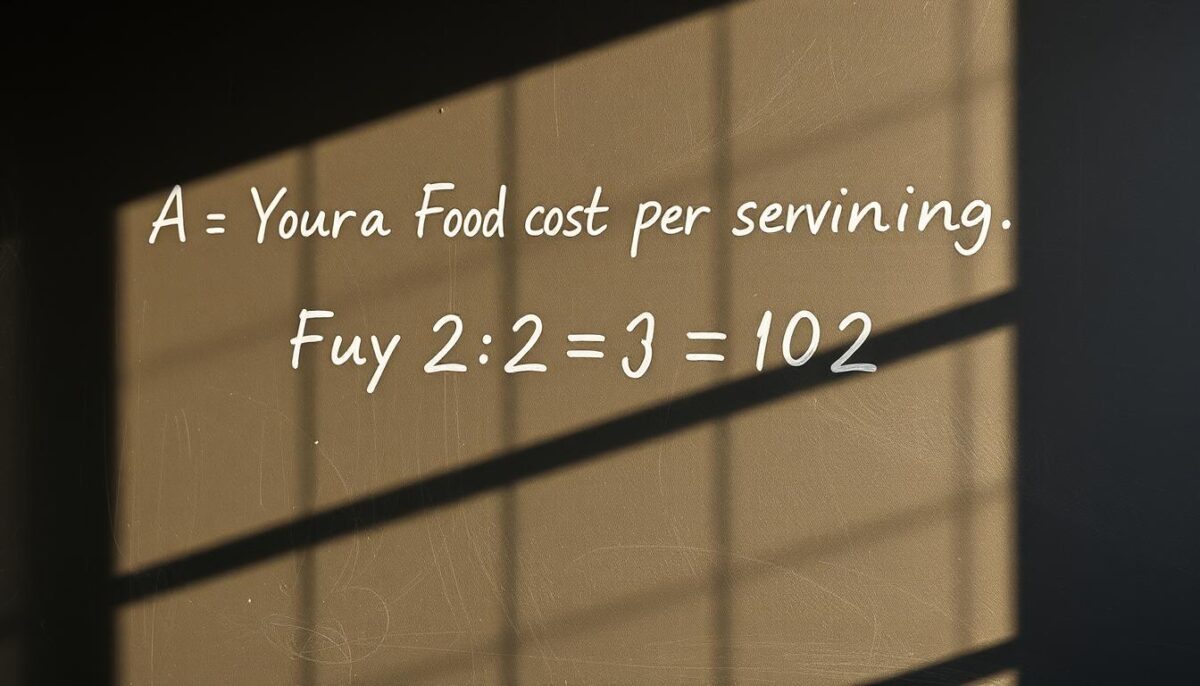
For instance, if a dish requires ingredients costing $10 in total and it serves 4 people, the food cost per serving is $2.50.
Step-by-Step Guide to Calculating Your Food Cost Percentage
Mastering the calculation of your food cost percentage is a fundamental skill for any restaurant manager aiming to optimize profitability. This calculation is crucial for understanding the financial health of your establishment and making informed decisions about menu pricing and inventory management.
Gathering the Necessary Data
To calculate your food cost percentage, you first need to gather accurate data on your inventory values, purchases, and sales figures. This involves taking a thorough inventory at the beginning and end of your chosen accounting period, recording all purchases made during this time, and tracking your total food sales. Ensuring the accuracy of this data is critical for a realistic calculation.
Organizing your inventory counts and maintaining detailed records of purchases and sales will streamline this process. It’s also beneficial to set up systems for consistent data collection to make ongoing calculations more efficient and less time-consuming.
Working Through the Formula with Real Numbers
Let’s apply the food cost percentage formula using an example from Johnny’s Burger Bar. With a beginning inventory value of $11,000, purchases of $7,000, an ending inventory value of $15,000, and total food sales of $8,000, we can calculate the food cost percentage as follows: Food cost percentage = ((11,000 + 7,000) – 15,000) / 8,000 = 37.5%. This example illustrates how to apply the formula with actual numbers to obtain a clear picture of your food costs.
By following this step-by-step process, you can accurately determine your restaurant’s food cost percentage and use this information to adjust your menu pricing and inventory management strategies.
Common Calculation Mistakes to Avoid
When calculating your food cost percentage, it’s essential to avoid common mistakes such as inaccurate inventory counts, failing to account for special situations like comped meals or food waste, and not regularly updating your data. These errors can lead to misleading calculations and poor decision-making.
To ensure accuracy, regularly review and update your inventory management and sales tracking systems. Being mindful of these potential pitfalls will help you maintain a clear and accurate picture of your restaurant’s financial performance.
Ideal vs. Actual Food Cost: Understanding the Difference
Understanding the gap between ideal and actual food costs is crucial for restaurant profitability. In the restaurant industry, managing food costs effectively is key to maintaining a healthy bottom line. The distinction between ideal food cost and actual food cost is vital in achieving this goal.
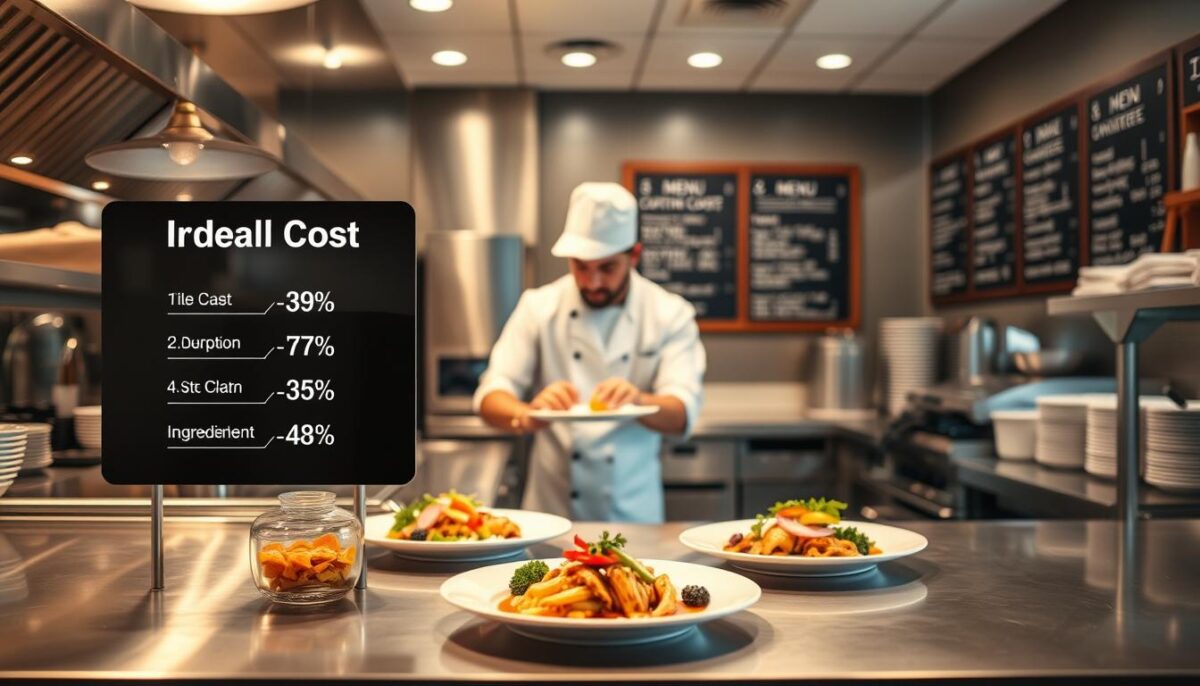
How to Calculate Your Ideal Food Cost
To find your ideal food cost percentage, you need to know two values: Total food costs and Total food sales. For instance, if your total food costs are $2,500 and your total food sales are $8,000, you can calculate your ideal food cost percentage by dividing total food costs by total food sales. This gives you an ideal food cost of 0.31 or 31%. This calculation provides a benchmark for your restaurant’s food costs.
Identifying and Addressing Discrepancies
Once you have calculated your ideal food cost, compare it with your actual food cost to identify any discrepancies. For example, if your actual food cost percentage is 37.5% and your ideal food cost is 31%, there’s a difference of 6.5%. This discrepancy could be due to waste, theft, or portion inconsistencies. To address these issues, consider conducting kitchen audits, providing staff training, and implementing process improvements to bring your actual food costs closer to your ideal targets.
Regularly comparing your ideal vs. actual food costs helps you continuously improve your restaurant’s efficiency and profitability. By understanding and addressing the differences between these two metrics, you can make informed decisions to optimize your menu pricing, inventory management, and kitchen protocols.
What Is a Good Food Cost Percentage?
A good food cost percentage is not a one-size-fits-all figure; it depends on several factors. To run a profitable restaurant, most owners and operators keep food costs between 28% and 35% of revenue. However, the ideal percentage varies depending on the type of food served and the restaurant’s overhead and operating expenses.
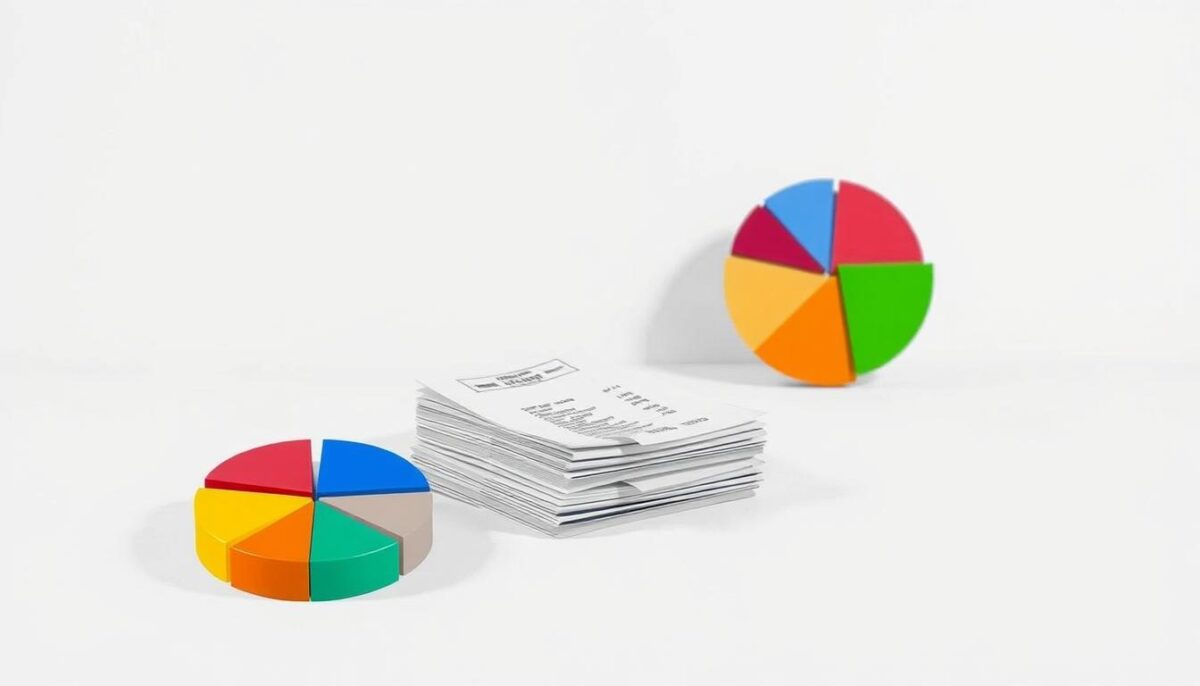
Industry Benchmarks by Restaurant Type
Different types of restaurants operate at different food cost percentages. For example, a steakhouse might have a food cost percentage close to 35% due to the high cost of ingredients, while a pasta restaurant might operate around 28% because pasta is cheap to buy in bulk. Here is a breakdown of typical food cost percentages by restaurant type:
| Restaurant Type | Typical Food Cost Percentage |
|---|---|
| Steakhouse | 35% |
| Pasta Restaurant | 28% |
| Fine Dining | 32% |
| Fast Casual | 30% |
Factors That Influence Your Target Percentage
Several factors influence your target food cost percentage, including location, concept, service style, and ingredient quality. Your overall business model, including labor costs and overhead expenses, should also inform your target food cost percentage. For instance, a restaurant with high labor costs might aim for a lower food cost percentage to balance out expenses.
To determine the right food cost percentage target for your specific restaurant, consider all relevant factors and balance food cost percentages with customer expectations and perceived value.
Pricing Your Menu Items for Maximum Profit
The art of pricing menu items is a delicate balance between profitability and customer appeal. To achieve this balance, restaurant owners must understand the fundamental principles of menu pricing and how to apply them effectively.
The Menu Pricing Formula
The basic formula for determining the menu price of an item is: Item Cost ÷ Target Food Cost Percentage = Menu Price. For instance, if the cost of a menu item is $4.40 and the target food cost percentage is 31%, the calculation would be $4.40 ÷ 0.31, resulting in a menu price of $14.20. This formula provides a straightforward way to ensure that menu prices are aligned with the restaurant’s profitability goals.
A small adjustment in price can lead to significant revenue increases over time. For example, increasing the price of a popular burger by $2.50 can generate over $65,700 in additional annual revenue if the restaurant sells 75 burgers a day.
Strategic Pricing Considerations Beyond Food Cost
While food cost is a critical factor in determining menu prices, it’s not the only consideration. Restaurant owners must also consider competitor pricing, perceived value, and psychological pricing tactics. For instance, pricing a menu item at $9.99 instead of $10 can make it more appealing to customers due to the perceived value.
Menu Engineering for Profitability
Menu engineering involves categorizing menu items based on their profitability and popularity. Items can be classified as stars, puzzles, plowhorses, or dogs. By highlighting high-profit items through strategic menu design, restaurants can influence customer purchasing decisions and maximize overall profit. This approach allows for the optimization of menu prices to achieve the desired balance between profitability and customer appeal.
By applying these principles, restaurant owners can create a menu pricing strategy that supports their business goals while maintaining customer satisfaction.
Practical Example: Calculating and Pricing a Signature Dish
Let’s dive into a practical example to understand how to calculate and price a signature dish effectively. We’ll use Johnny’s Burger Bar’s famous Johnny Burger as a case study to illustrate the process.
Breaking Down Ingredient Costs
To calculate the food cost of the Johnny Burger, we need to break down its ingredient costs. The dish consists of 8 ounces of ground beef, 1 sesame seed bun, 1 tablespoon of sauce, 2 slices of cheese, 2 slices of tomatoes, and 2 potatoes. Johnny buys his ingredients in bulk; for instance, he pays $19 for 5 pounds of ground beef. To find the cost per serving, we calculate that 8 ounces of ground beef costs $1.90. Similarly, we determine the cost per serving for the remaining ingredients.
- 8 ounces of ground beef = $1.90
- 1 sesame seed bun = $0.25
- 1 tbsp. of sauce = $0.10
- 2 slices of cheese = $0.90
- 2 slices of tomatoes = $0.50
- 2 potatoes = $0.75
The total ingredient cost per serving is $1.90 + $0.25 + $0.10 + $0.90 + $0.50 + $0.75 = $4.40.
Applying the Food Cost Formula
Now that we know the total ingredient cost is $4.40, we can apply the food cost formula to determine the menu price. If Johnny’s target food cost percentage is 30%, we can calculate the menu price using the formula: Menu Price = Total Ingredient Cost / Target Food Cost Percentage.
| Ingredient | Cost |
|---|---|
| 8 oz ground beef | $1.90 |
| Sesame seed bun | $0.25 |
| Sauce | $0.10 |
| Cheese | $0.90 |
| Tomatoes | $0.50 |
| Potatoes | $0.75 |
| Total | $4.40 |
Setting the Final Menu Price
Using the food cost formula, we find that the menu price should be $4.40 / 0.30 = $14.67. Johnny can then consider pricing strategies, such as rounding to $14.99 or $15.99, to make the dish more appealing to customers.
Strategies to Lower Your Food Costs
To maintain a healthy bottom line, restaurants must implement effective strategies to reduce food costs. By optimizing vendor relationships, reducing food waste, and designing menus that control costs, restaurants can significantly improve their profitability.
Optimizing Your Vendor Relationships
One of the most effective ways to lower food costs is by optimizing your vendor relationships. This can be achieved by finding cost-effective vendors who offer the same quality ingredients at a lower price. Focusing on local suppliers can also help save on transportation costs. Negotiating better terms with existing suppliers, such as volume discounts and favorable payment terms, can also contribute to reduced costs. Joining a group purchasing organization or partnering with other businesses to buy ingredients in bulk can lead to significant savings through bulk purchasing discounts and shared delivery fees.
Reducing Food Waste in Your Kitchen
Reducing food waste is another crucial strategy for lowering food costs. Proper storage and inventory rotation can help minimize waste. Creatively using trim and byproducts can also contribute to cost savings. For instance, using vegetable scraps to make stock or broth can reduce waste and add value to your menu.
| Strategy | Potential Savings | Implementation Difficulty |
|---|---|---|
| Optimizing Vendor Relationships | 5-10% | Medium |
| Reducing Food Waste | 3-5% | Low-Medium |
| Menu Design Techniques | 2-4% | Low |
Menu Design Techniques That Control Costs
Menu design plays a significant role in controlling food costs. By designing menus that use cross-utilization of ingredients across multiple dishes, restaurants can reduce waste and inventory requirements. Serving dishes with overlapping ingredients can also help minimize costs. Seasonal menu planning can help take advantage of ingredients when they’re most abundant and affordable, further reducing costs.
By implementing these strategies, restaurants can effectively lower their food costs without sacrificing quality, ultimately improving their bottom line.
Tracking the Impact of Your Pricing Decisions
Understanding how your pricing decisions influence customer behavior is vital for long-term success. After adjusting menu prices, it’s essential to monitor the impact on your business to ensure that your profitability goals are met.
Key Metrics to Monitor
To effectively track the impact of your pricing decisions, you need to focus on several key metrics. These include sales volume, revenue, profit margins, and customer feedback. By analyzing these metrics, you can determine whether your pricing strategy is successful or needs adjustment.
For instance, let’s consider Johnny’s scenario. After increasing the menu price of the Johnny Burger to $14.20, he observed two possible outcomes: either the sales slowed down or they remained robust. In the first scenario, if sales decreased significantly, it might indicate that the price is too high for customers. Conversely, if the burger continued to sell well, it could mean that customers can afford another price bump.
| Metric | Pre-Price Change | Post-Price Change |
|---|---|---|
| Sales Volume | 100 units | 80 units |
| Revenue | $1200 | $1136 |
| Profit Margin | 20% | 22% |
When and How to Adjust Your Prices
Adjusting your prices in response to changing market conditions or customer behavior is crucial. If you notice a significant drop in sales volume, you may need to revisit your pricing strategy. On the other hand, if sales remain strong, you might consider further price adjustments to maximize profitability.
For example, Johnny could aim for a food cost percentage of 28%, which would price the Johnny Burger at $15.70. This strategic pricing decision would depend on his target profit margin and customer price sensitivity.
By regularly reviewing your pricing strategy and its impact on your business, you can make informed decisions to optimize your menu prices and maintain a competitive edge in the market.
Leveraging Technology to Streamline Food Cost Management
In today’s fast-paced restaurant industry, leveraging technology is crucial for effective food cost management. By adopting the right technological solutions, restaurants can significantly reduce manual errors, improve accuracy, and save time.
One of the most significant advantages of using technology in food cost management is the ability to automate processes. This not only reduces the workload but also minimizes the chance of human error.
Inventory Management Systems
Inventory management systems are a game-changer for restaurants looking to optimize their food cost management. These systems track ingredient usage, monitor waste, and automatically calculate food costs, providing real-time insights into inventory levels. By using an inventory management system, restaurants can identify trends and patterns in their food costs that would be difficult to spot manually.
Key benefits include: reduced waste, improved inventory accuracy, and better supplier negotiation capabilities.
POS Systems with Food Cost Analytics
POS systems with food cost analytics capabilities offer a comprehensive solution for managing food costs. These systems provide real-time reporting and menu engineering tools, enabling restaurants to make data-driven decisions about their menu offerings and pricing strategies. By analyzing sales data and food costs, restaurants can identify areas of inefficiency and make adjustments to improve profitability.
When selecting a POS system, look for features such as automated inventory tracking, sales reporting, and menu engineering tools to get the most out of your investment.
Conclusion
Understanding and managing food costs is key to maximizing restaurant profits. By applying the essential food cost formula and regularly reviewing menu prices, you can ensure profitability while maintaining customer satisfaction. To achieve this, implement a regular schedule for food cost analysis and menu price reviews. Even small improvements in food cost percentage can significantly impact your bottom line. By balancing food costs with customer value perception, you can maintain both profitability and customer satisfaction, setting your restaurant up for long-term success.
FAQ
What is the ideal food cost percentage for a restaurant?
The ideal percentage varies by restaurant type, but generally falls between 28% to 35% of total sales. For instance, fine dining establishments may have a higher percentage due to the use of premium ingredients, while fast-casual restaurants may have lower percentages.
How do I calculate my restaurant’s food cost?
To calculate your restaurant’s food cost, you’ll need to determine the total value of your inventory at the beginning and end of a period, as well as the total purchases made during that time. You can then use the basic food cost percentage formula to arrive at your percentage.
What is the difference between ideal food cost and actual food cost?
Ideal food cost represents the theoretical minimum percentage based on menu pricing and ingredient quantities, while actual food cost reflects the real-world percentage, taking into account factors like waste, theft, and over-portioning.
How often should I review and adjust my menu pricing?
It’s a good idea to review your menu pricing regularly, ideally every quarter, to ensure you’re staying competitive and maintaining profitability. You may need to adjust your prices in response to changes in ingredient costs, consumer demand, or market conditions.
What are some strategies for lowering food costs without sacrificing quality?
Some effective strategies include optimizing your vendor relationships to secure better prices, reducing food waste in your kitchen, and implementing menu design techniques that control costs and promote profitability.
How can technology help me manage my food costs more effectively?
Inventory management systems and POS systems with food cost analytics can help you track your inventory levels, monitor sales trends, and make data-driven decisions to optimize your menu pricing and food cost percentage.
